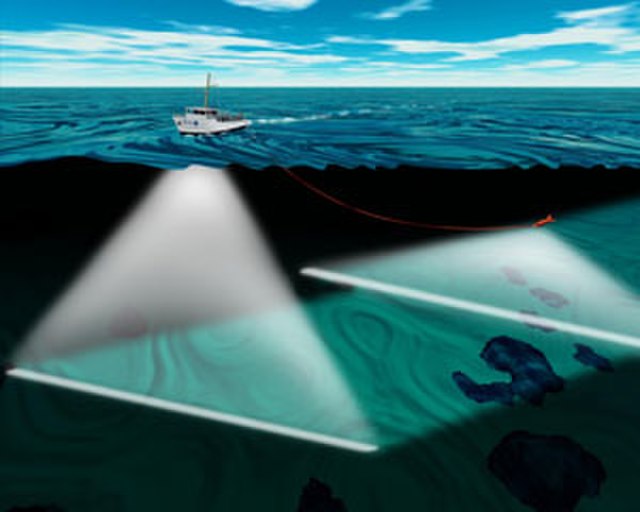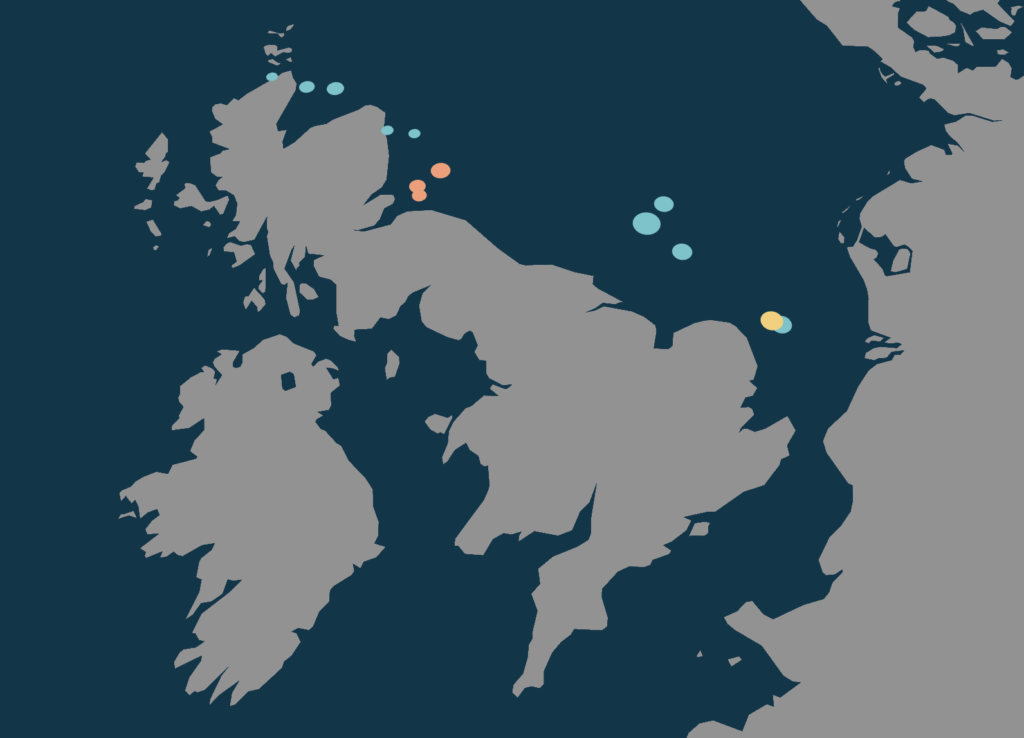Making Waves in the Fight to Save the Oceans
Professor Len Thomas and colleagues, from the School of Mathematics and Statistics, have been developing statistical methods to reduce environmental impacts on the world’s oceans. Their work has been used in a range of industries, from naval forces to the placement of wind turbines. One watermark for truly impactful research can be how widely it is used, and the breadth of applications for Thomas’ work is impressive. The three examples below are certainly not a comprehensive list; as climate change becomes an increasingly pressing issue, the impact of Thomas and colleagues’ work will only continue to grow.

Sonar has been a crucial part of naval warfare since the development of passive sonar systems to counter submarines in World War One. Today, sonar capabilities are frequently tested by navies around the world to ensure they remain effective. While it has long been understood that the loud noises associated with sonar have the potential to harm marine life, and many countries require that environmental effects such as this are minimised, little has been known about its specific effects until very recently. Significant developments in the use of sonar at the University were first made by the School of Biology, particularly in the responses of cetaceans – whales, dolphins and porpoises. Before the School of Biology began its research in 2006, it was unknown how severe cetacean responses to sonar were, at what level of volume they occurred, or even what the responses would be.
The School of Biology helped to change this through the use of behavioural response studies (BRS), in which the response of marine animals to sonar is observed directly. Leading researchers in Biology used this protocol to investigate the behavioural responses of 10 different species of cetacean from 2006 to 2016, providing critical datasets that have been used to improve sonar use around the world. Without their use of the BRS protocol, subsequent work from the School of Mathematics and Statistics would have been impossible.

The School of Biology’s work with BRS is impressive in demonstrating previously unknown marine responses. To be as effective as possible, these studies required a suitable analysis method to understand the responses marine mammals had to sonar. Between 2012 and 2015, Professor Thomas, of the School of Mathematics and Statistics, led a research project which developed such a method, allowing researchers to determine through statistical analysis whether a behavioural response had occurred during a behavioural response study, and the likelihood that a certain level of sonar would elicit a response from marine life. Their analytical model has assisted the navies of the US, the UK, the Netherlands, France, and Norway to reduce the impact of their sonar on marine life, demonstrating compliance with their country’s environmental regulations. In the US, for instance, the team’s analytical model was one of the tools used by Thomas and a PhD student when assisting in the development of Environmental Impact Assessments at the invitation of the Navy’s environmental compliance team.
Together, the influence of the two schools has been seen in navies around the world. In 2018, NATO was able to conduct a series of large, international naval operations in beaked whale habitats with no known impact upon the whales whatsoever. This achievement shows that, with the help of research exemplified by the schools of Biology, and Mathematics and Statistics, naval operations are possible without impacting marine life. The significance of this research is clearer than ever. 2018 saw a record-breaking number of beaked whales stranded off the Irish and Scottish coasts, but thanks to a dedicated team of researchers the solution is coming into view.

During largely the same period, research led by Thomas’ colleagues in the School of Mathematics and Statistics, Professor Mackenzie and Dr Scott-Hayward, developed an adaptive method of quantifying the environmental impact of windfarm construction on the displacement of native animals. The installation of offshore wind turbines has the potential to severely affect marine mammals and seabirds by forcing them out of their natural habitats. For construction to go ahead, developers must assess the potential damage their construction will cause, and existing methods of assessment are sometimes prohibitively costly. The Scottish Government commissioned Mackenzie and Scott-Hayward to create MRSea, freely available software that quantifies windfarm-related effects and the ability of assessment methods to deflect those effects. This has played a large role in enabling developers and conservationists to understand the effect windfarms would have on local wildlife, even in areas of complex topography such as the areas around coastlines. Findings from MRSea play a key role in allowing the production of more renewable energy sources and help to ensure that they are built in sustainable locations. As of 2020, MRSea has been used in the planning process for at least 13 windfarms, which together have the capacity to power 4.5 billion homes.
Chemical pollution is among the most widely recognised forms of damage humans can inflict on the oceans. After disasters such as the 2010 Deepwater Horizon explosion, which released over 3 million barrels of oil into US waters, there was huge public pressure to prevent such damage from happening again. Part of the learning process from this disaster was an assessment of the damage caused, including its consequences for marine life. Thomas joined the group responsible for this assessment in 2014 and played an important role in its research, using what incomplete data there was regarding the spill to estimate the scale of the damage and how long recovery could take. The team submitted their final report in 2015, around the same time that BP settled with the US Government for over $20 billion. Nearly US$9 billion of this was assigned to restore environmental damage – it is doubtful whether such a large and necessary sum would have been secured without vital analysis such as that conducted by Thomas and the rest of the team.